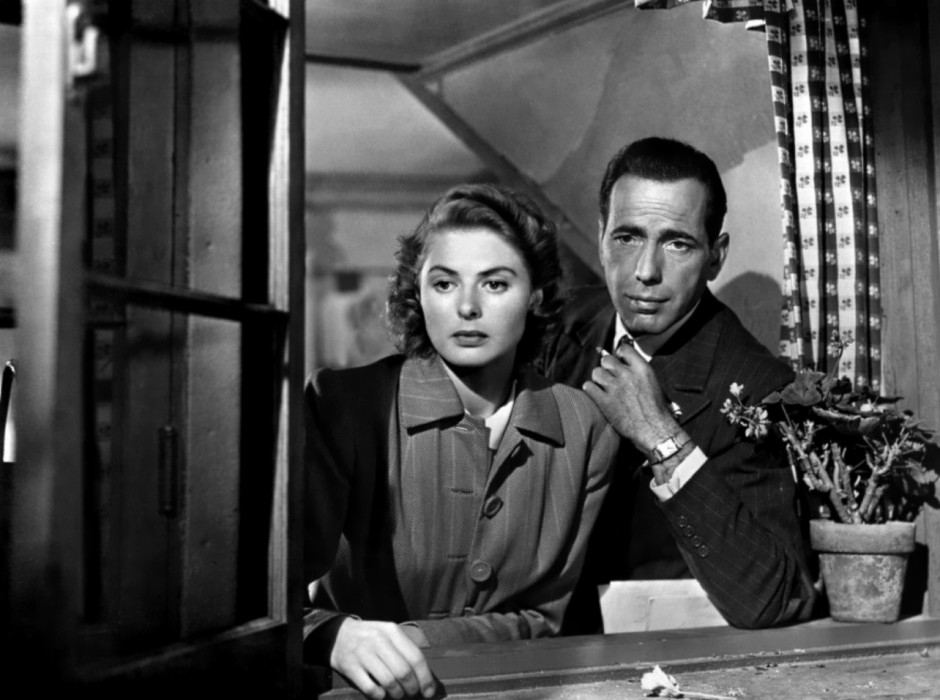Nearly six months before the United States declared war on Japan following its attack on Pearl Harbor, the syndicated columnist Stewart Alsop, writing in the Atlantic Monthly, warned, “To fight the war we will be sooner or later called upon to fight we need a crusading faith, the kind that inspired the soldiers of 1917.”

He added ominously, “We haven’t got it. Certainly the men who will do the fighting haven’t got it.”
Alsop’s piece caught the eye of one of the highest-ranking generals in the U.S. armed forces, George Marshall, who strongly believed that movies could help instill that crusading faith among American civilians and soldiers.
After Pearl Harbor, the U.S. War Department, acting on the recommendation of Marshall and a few senior officers, turned to the Hollywood film industry to crank out a sustained program of filmed propaganda to explain American objectives and tout its successes on the battlefield.
President Franklin Roosevelt’s administration had used short films and newsreels to sell the New Deal to the American public, and now the War Department would do the same to explain the war and lift morale.
In Five Came Back: A Story of Hollywood and the Second World War, published by Penguin Press, Mark Harris focuses on five major movie directors who spearheaded this effort: John Ford, William Wyler, John Huston, Frank Capra and George Stevens.

As Harris says, the War Department needed Hollywood — its manpower, its know-how, its equipment, its salesmanship, its experience and the ideas of its most skilled directors.
“Movies brought tens of millions of Americans out of their homes every week and stirred them to laughter, tears, anger and, increasingly, patriotism. Filmmakers could not win the war, but Capra, Ford, Huston, Stevens and Wyler had already shown that they could win the people. This was more than enough to secure the five men — the most influential and innovative American film directors to volunteer for service — a place of critical importance in the war effort.”
All five, as Harris observes, were eager to serve.

Huston sought to slake his thirst for risk and danger. Ford wanted to discover and measure his bravery. Capra, an immigrant who regarded himself as an outsider, saw it as a chance to define himself as an American patriot. Wyler, the only Jew in the group, wanted a chance to fight Germany. Stevens hoped to use his camera, for the first time, to record reality as opposed to froth.
The Hollywood motion picture industry was still relatively new when the war broke out in 1939. And, as Harris points out, its first and second generation founders were still viewed warily, and often through the lens of tacit or overt antisemitism, by the time Pearl Harbor was attacked. Indeed, American isolationists like Senator Gerald Nye, a Republican from North Dakota, rejected a U.S. role in the war altogether and assailed the “foreigners” who ran the Hollywood studios.

The war sidelined such ideas and notions and changed the lives of the five directors whom Harris highlights in this thoroughly-researched and fast-paced book.
Called upon to help win American hearts and minds, they came through with flying colors.
Ford made Sex Hygiene, an explicit documentary for new enlistees about the dangers of syphilis and gonorrhea, and The Battle for Midway, whose production values Harris praises.
Wyler, whose relatives lived in Nazi Germany, directed The Negro Soldier, a documentary designed to combat racism in the ranks, and Memphis Belle, which The New York Times hailed as “one of the finest fact films of the war … a perfect example of what can be properly done … to visualize the war for people back home.”
Capra’s Why We Fight cast the war as a battle between freedom and slavery and presented the Axis powers — Germany, Italy and Japan — as evil incarnate.

Stevens filmed the D-Day landings on June 6, 1944, a turning point in the war, and the liberation of the Nordhausen concentration camp. In a communique, he described the camp “as stark an example as could be found anywhere of the utter German indifference to human life …”
Stevens also witnessed the horrors of the Dachau concentration camp, and it affected him deeply. His documentaries, Nazi Concentration Camps and Prison Camps and The Nazi Plan, were entered into evidence at the Nuremberg war crimes trial in 1946.

Huston made Report from the Aleutians, Across the Pacific and The Battle for San Pietro, all of which gave Americans a clearer understanding of what was at stake in the war.
All in all, Hollywood produced more than 300 movies infused with spirit-building messages about the war.
Japanese villains, written into the scripts of dozens of these films, were grotesquely portrayed, “baring buck teeth in phony smiles and feigning exaggerated politeness behind bottle-thick glasses,” Harris says.
In 1944, in response to sagging box office receipts, Hollywood began shifting its attention away from war movies and toward other genres — musicals, comedies, religious epics and historical biographies.
Nonetheless, Casablanca, a war-themed film starring Humphrey Bogart and Ingrid Bergman, won the Academy Award for best picture in 1944.

After the war, the five directors who had served their country so honourably went back to their old lives.

Capra, having won five Academy Award nominations for It’s a Wonderful Life, turned out only five more movies during the rest of his career, none of which were particularly successful.
Wyler, having dazzled critics and audiences alike with The Best Years Of Our Lives, directed a succession of hits, including The Heiress, Ben-Hur and Funny Girl.
Huston went on to make The Treasure of the Sierra Madre.
Stevens and Ford respectively directed A Place in the Sun and The Grapes of Wrath.
But as Harris suggests, the propaganda films they made during the war may have left the deepest impression on them.
Indeed
